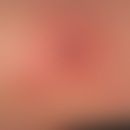Synonym(s)
HistoryThis section has been translated automatically.
Israel 1878; Bollinger 1877
DefinitionThis section has been translated automatically.
Globally occurring, rare (constantly decreasing in industrialized countries), endogenous (mostly after dental surgery), bacterial (mixed) infectious disease caused by a facultative pathogen (Actinomyces israelii) occurring in the physiological oral cavity flora which causes the infection in connection with symbiotic accompanying bacteria.
You might also be interested in
PathogenThis section has been translated automatically.
Anaerobic, Gram-positive and Grocott-positive pathogens, mainly Actinomyces israelii, less frequently Actinomyces naeslundi and Actinomyces radingae; Actinomyces bovi also occurs in individual cases in humans. Always mixed infection(staphylococci, streptococci, Pseudomonas aeruginosa, fusobacteria, etc.). Actinomyces israelii is a germ of the normal flora of humans and animals and occurs mainly in the mouth and throat.
ClassificationThis section has been translated automatically.
According to the localization of the manifestations 3 forms are distinguished:
- Cervicofacial actinomycosis: about 80-85% of all cases.
- Thoracic actinomycosis: about 13-15% of all cases.
- Abdominal actinomycosis: about 3% of all cases
- Other (see casuistry)
Occurrence/EpidemiologyThis section has been translated automatically.
Worldwide appearance. It occurs more frequently among the rural population than among the urban population. More common in developing countries, but very rare in industrialized countries due to the more frequent use of antibiotics.
m:w=3:1;
ManifestationThis section has been translated automatically.
LocalizationThis section has been translated automatically.
Mostly in the soft tissues of the face and neck region (cervico-facial form); also thorax (thoracic form), abdomen (abdominal form), arms or buttocks.
ClinicThis section has been translated automatically.
incubation period: about 4 weeks
The infection often spreads from the depth of the lower jaws to the skin. Fever and local pain can be accompanying symptoms.
On the skin (more rarely on the mucous membrane: macroglossia) and the deep tissue there are hard, blue-red, infiltrated indurations and nodules with a tendency to ulceration or melting with a tendency to fistulas and pronounced scarring. Often adhesions in the surrounding tissue. In the exiting pus macroscopically recognizable, 0.2-0.5 cm large, irregularly shaped, yellowish, solid grains ( drusen) can already be seen. No spontaneous healing tendency.
HistologyThis section has been translated automatically.
DiagnosisThis section has been translated automatically.
Clinic, histology from a deep excision biopsy (punch biopsies are not sufficient with regard to their depth), detection of drusen in smears from fistula ladder in Gram staining, cultivation of the pathogen from smears or from biopsy and resistogram (increasing antibiotic resistance!), detection of the pathogen by PCR.
Differential diagnosisThis section has been translated automatically.
tuberculous abscesses
syphilitic gums
chronic pyoderma
dentogenic fistulas
osteomyelitis
oral phlegmon.
If located on the buttocks: acne conglobata or hidradenitis suppurativa
Complication(s)(associated diseasesThis section has been translated automatically.
TherapyThis section has been translated automatically.
Internal therapyThis section has been translated automatically.
Antibiotic therapy for weeks or months.
- The drug of first choice is penicillin G: benzylpenicillin (e.g. penicillin Grünenthal) initially as a short infusion twice a day 10 million IU i.v. over at least 4-6 weeks. Then phenoxypenicillin (e.g. Baycillin Mega) 2-5 million IU/day p.o. over 4-6 months or benzathine penicillin (e.g. Tardocillin 1200), 2 ampoules i.m. every 4 weeks.
- Alternatively ampicillin (e.g. Binotal) 4 times/day 0.5-1.0 g p.o. or 100-150 mg/kg bw/day i.v. over at least 4-6 weeks.
- Alternative: Cephalosporin for parenteral application is especially recommended Cefoxitin (e.g. Mefoxitin) 3-4 times/day 1.0-2.0 g i.v. because of its broad spectrum and the special anaerobic component.
- Alternatively: Tetracycline (e.g. Tetracycline-ratiopharm) 3-4 times/day 0.5 g p.o. over 4-6 weeks or Lincomycin (e.g. Albiotic) 3-4 times/day 500 mg p.o. or 3-4 times/day 600 mg/day i.v.
- In case of mixed infections with staphylococci or other anaerobes, flucloxacillin (e.g. Staphylex Kps.) is additionally applied 3-4 times/day 0.5-1.0 g p.o., i.m. or i.v. Alternatively, clindamycin (e.g. sobelin) can be applied 3-4 times/day 300 mg p.o. or 3-4 times/day 600 mg i.v.
- In case of resistance to therapy, it is recommended to cultivate the pathogen and to treat it with resistogram-adapted therapy.
Operative therapieThis section has been translated automatically.
Progression/forecastThis section has been translated automatically.
Highly chronic course; no impairment of the general condition; however, the board-like infiltrates and osteomyelitis lead to retracted and disfiguring scars. Cervical actinomycosis has a favourable prognosis if diagnosed in time and treated sufficiently (Jeong YJ et al. 2017).
Case report(s)This section has been translated automatically.
In a 44-year-old patient a largely symptom-free, 3x2cm red, exulcerated induration developed on the outside of the right upper arm after a slight dog bite for more than half a year. In the course of this time a nodular size progression occurred, with increasing ulceration and constant purulent secretion. An analogous focal point appeared on the left (!) arm. Laboratory examination revealed leukocytosis (11,500/ml), as well as increased inflammatory parameters (BSG: 35/h; CRP:5.2mg/dl). A peroral antibiotic therapy with clindamycin did not show any improvement. A deep excision biopsy revealed deep granulation tissue with neutrophil abscesses. No evidence of drusen. However, a microbiological examination of the tissue carried out at the same time led to the detection of Actinomyces naeslundi. The germ was resistant to clindamycin. The antibiotic therapy was changed to a combination treatment with moxifloxacin and ampicillin/sulbactam. Including healing of the findings after 6 weeks.
LiteratureThis section has been translated automatically.
- Charalabopoulos K et al (2003) Lung, pleural and colon actinomycosis in an immunocompromised patient: a rare form of presentation. Chemotherapy 49: 209-211
- Chaudhry SI, Greenspan JS (2000) Actinomycosis in HIV infection: a review of a rare complication. Int J STD AIDS 11: 349-355
- Clarridge JE 3rd, Zhang Q (2002) Genotypic diversity of clinical Actinomyces species: phenotype, source, and disease correlation among genospecies. J Clin Microbiol 40: 3442-3448.
- Cocuroccia B et al (2003) Primary cutaneous actinomycosis of the forehead. J Eur Acad Dermatol Venereol 17: 331-333.
- Israel JA (1885) Clinical contributions to the knowledge of actinomycosis of man. A. Hirschwald (Berlin), pp 152.
- Israel JA (1885) Clinical contributions to the knowledge of actinomycosis of man. Z Clin Med 6: 392
- Jeong YJ et al (2017) Cervicofacial primary cutaneous actinomycosis: Surgical Treatment for Complete Remission of the Disease. J Craniofac Surg 28:e269-e271.
Khadka P et al (2019) Primary cutaneous actinomycosis: a diagnostic consideration in people living with HIV/AIDS. AIDS Res Ther 16:16.
- Kobayashi KI et al.(2019) Erysipelothrix rhusiopathiae bacteremia following a cat bite.
IDCases 18:e00631. - Kodali U et al. (2003) Abdominal actinomycosis presenting as lower gastrointestinal bleeding. Endoscopy 35: 451-453
- Olson JM et al (2013) Primary cutaneous Actinomyces neuii infection of the breast successfully treated with doxycycline. Cutis 92:E3-E4
- Park JK et al (2003) Cervicofacial actinomycosis: CT and MR imaging findings in seven patients. AJNR Am J Neuroradiol 24: 331-335.
- Tedeschi A et al (2003) A case of pelvic actinomycosis presenting as cutaneous fistula. Eur J Obstet Gynecol Reprod Biol 108: 103-105.
- Varga R et al (2012) Primary cutaneous actinomycosis of the femorogluteal region: two case reports. Acta Derm Venereol 92:445-446
Incoming links (21)
Bacteriae; Cancer en cuirasse; Cat scratch disease; Coccidioidomycosis; Cowpox; Cutaneous botryomycosis ; Druze; Facial swelling; Fistula, odontogenic; Folliculitis gramnegative; ... Show allOutgoing links (19)
Acne conglobata; Ampicillin; Antibiotics; Cephalosporins; Clindamycin; Druze; Excision; Flucloxacillin; Gram staining; Gumma; ... Show allDisclaimer
Please ask your physician for a reliable diagnosis. This website is only meant as a reference.













